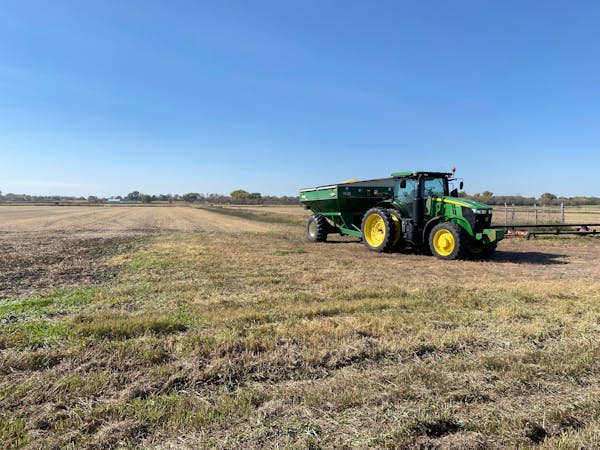Minnesota began 2023 with about half the state still in drought. It was particularly bad in the south, with a severe stretch that began almost two years ago reaching from Minneapolis to close to the South Dakota border.
But with every shovelful of snow, the dry spell has been easing up across the state. Minnesota is off to one of the snowiest, wettest starts to a year in more than a century.
The drought has been improving all winter, said Caleb Grunzke, meteorologist with the National Weather Service.
"But slowly," he said. "We're going to need a few more snowstorms and good spring rain. Snow helps, but the liquid in snow is just not as abundant as it is in pure rain."
While the drought is receding, it still covers about a third of the state, including the Twin Cities and the Fargo-Moorhead area, according to the U.S. Drought Monitor. Parts of southern Minnesota, including all of Cottonwood County, are still in severe drought.
Some of that is because precipitation fell so far behind during the bone dry summers of 2021 and 2022. The drought was the state's worst since 1988.
Many rivers and creeks dried to their lowest flows ever recorded. Cities and towns almost universally enacted lawn watering bans or restrictions. Dozens of private-well owners complained about losing their water supply. And nearly 800 Minnesota farmers with high-capacity wells violated their permits to keep crops alive, pumping 6.5 billion more gallons of water than they were allowed.
While things improved over 2022, especially in northern Minnesota, the drought persisted in most of the southern and western parts of the state. The Minneapolis-St. Paul area got about 7 inches less water than normal last year, Grunzke said.
But now, two months in to 2023, the year looks promising for lawns, gardens, trees, lakes, rivers and crops.
By the end of last week's winter storm, the Twin Cities metro area had gotten a total of 3.8 inches of precipitation — that's the most this early in the year since 1976. It's just the third time the area has received that much snow, sleet and rain to start the year over the 150-year period that records have been kept.
Near and long-term forecasts say more water is likely on the way.
There's a good chance much of the state will have above-average snowfall over the next two weeks. The Weather Service also predicts there will be above-average precipitation throughout March, Grunzke said.
It's too early to tell if the snow will become a flooding threat when it starts to warm. Some droughts, if they are bad enough, can make the earth so dry that it actually becomes harder for water to seep in, making flash floods more likely.
But the bigger flooding threat in Minnesota is always ice, Grunzke said.
If the ground is too frozen to accept water when snow melts and spring rains come, it can lead to flash floods. In that sense, the solid snowpack has helped, he said.
The deep snow cover insulates the ground from the frigid air. The frost line is relatively shallow this year at around 8 inches deep — a good sign that the soil will thaw in time as Minnesota warms up over the next month.

Trail section at one of Minnesota's most iconic spots closing for rehab

Will 'shotgun only' zone for deer in southern Minnesota be abolished?

Four Minnesotans catch salmonella in outbreak linked to basil sold at Trader Joe's


